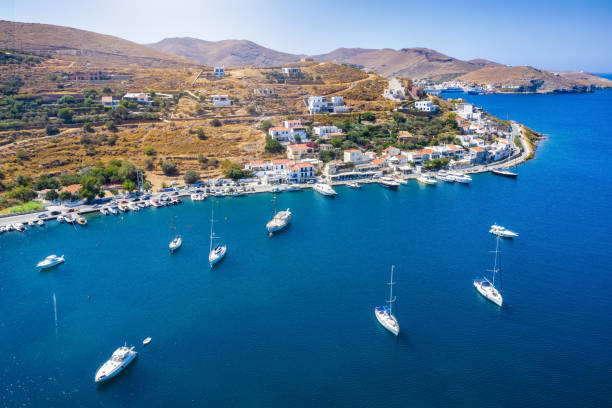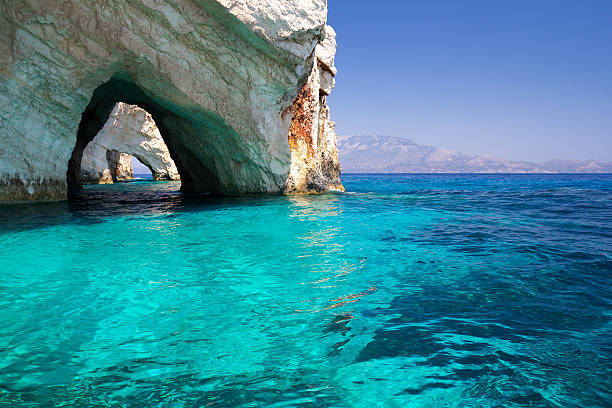Greece’s turquoise seas aren’t just for sunbathing and sailing—they’re a portal to another world. Beneath the waves are ancient shipwrecks, caves, and coral reefs. They whisper tales of myth, trade, and maritime drama. Whether you’re a seasoned diver or a curious snorkeler, Greece’s underwater realm offers adventures as epic as its temples. Grab your fins and let’s explore the secrets of the Aegean and Ionian Seas.
1. The Shipwrecks: Sunken Time Capsules
The Peristera Shipwreck (Alonissos)
What’s special: This 5th-century BC merchant ship, called the “Parthenon of Shipwrecks,” sank near Alonissos. It spilled thousands of amphorae on the seafloor. Why dive here: It’s one of the world’s oldest and most intact ancient wrecks, accessible to snorkelers and divers. The site is part of Europe’s first underwater museum. Pro tip: Visit in summer for calm waters and guided virtual reality tours that bring the wreck’s history to life.

The Britannic (Kea Island)
What’s special: The Titanic’s sister ship, sunk by a German mine in 1916 during WWI, lies 400 feet deep off Kea. Why dive here: A hauntingly preserved relic of maritime history, but only accessible to experienced technical divers. Local legend: Jacques Cousteau once explored its ghostly corridors.

The WW2 Wrecks of Crete
What’s special: The waters around Crete are littered with sunken planes, submarines, and ships from the Battle of Crete. Why dive here? History buffs can explore a sunken battlefield, including the HMS Perseus submarine.
2. The Caves: Gates to Another Dimension
The Blue Caves of Zakynthos
What’s special: A network of sea caves. Sunlight refracts through the water, painting the walls in ethereal blues. Why snorkel here: Swim through glowing arches and spot neon-colored nudibranchs clinging to the rocks. Bonus: Nearby Shipwreck Beach (Navagio) offers iconic above-water views.

Dragonisi Cave (Mykonos)
What’s special: A jagged, otherworldly cavern said to be the lair of a mythical dragon. Why dive here: Its crystal-clear waters and dramatic stalactites make it a photographer’s dream.
Melissani Cave (Kefalonia)
What’s special: A partially submerged cave lake with water so clear, boats appear to float in mid-air. Why visit: Paddle through a cave. Sunlight filters through a collapsed roof, creating a cathedral-like glow.
3. The Coral Reefs: Underwater Gardens
Amorgos’s Aegli Reef
What’s special: A vibrant reef teeming with parrotfish, octopuses, and rare red coral. Why dive here: The island’s deep, nutrient-rich waters (famously featured in The Big Blue) attract diverse marine life.
Santorini’s Volcanic Reefs
What’s special: Black lava rock formations covered in colorful sponges and anemones. Why snorkel here: The volcanic geology creates a surreal, almost lunar landscape beneath the waves.
Protected Marine Parks: Alonissos & the Northern Sporades
What’s special: Greece’s largest marine reserve, home to endangered monk seals and posidonia seagrass meadows. Why explore: Strict conservation efforts mean pristine waters and thriving biodiversity. Spot dolphins, tuna, and even whales.
4. Tips for Diving in Greece
Best time to visit: May to October for warm water (20–28°C) and visibility up to 40 meters.
For beginners: Try sheltered bays in Crete or Rhodes, where calm waters and dive schools abound.
Eco-friendly diving: Use reef-safe sunscreen and avoid touching artifacts or coral.
Myth Meets Reality
Greek waters aren’t just about history—they’re steeped in legend. Did Theseus battle the Minotaur in a labyrinth like the caves of Milos? Did Odysseus sail past these same reefs on his epic journey? As you dive, let your imagination run wild.
Final Dive Greece’s underwater world is a living museum. Ancient amphorae share the seafloor with neon fish. Monk seals dart through sunlit caves. Diving here isn’t just a hobby. It’s a pilgrimage to the Mediterranean’s soul. You can trace shipwrecks’ ghosts or float in a sapphire-lit cavern.
